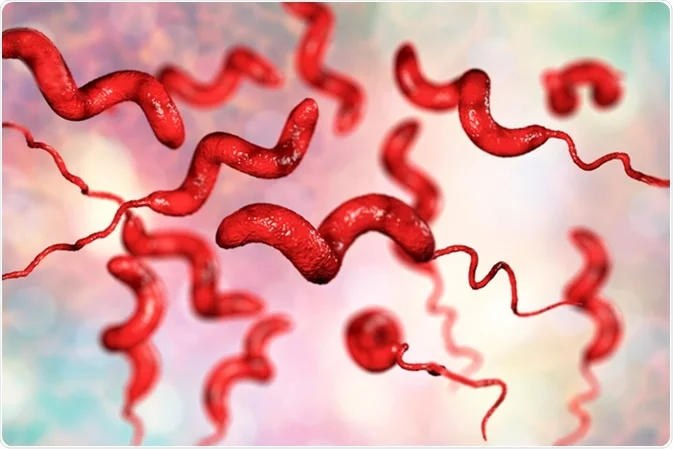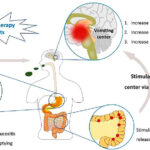Campylobacter fetus infection, caused by the Gram-negative bacterium Campylobacter fetus, is a rare but clinically significant condition affecting humans and animals. This pathogen is primarily recognized for its role in zoonotic diseases, with cattle and sheep being common reservoirs. In humans, the infection can lead to a range of illnesses, from mild gastrointestinal disturbances to severe systemic conditions.

Etiology and Pathophysiology
Pathogen Description
Campylobacter fetus belongs to the Campylobacteraceae family and is characterized by its curved, rod-like structure and polar flagella. The bacterium is microaerophilic, requiring low oxygen levels for optimal growth, and thrives at temperatures between 37°C and 42°C.
Transmission
Transmission of C. fetus occurs via:
- Zoonotic pathways: Direct contact with infected animals or their feces.
- Foodborne routes: Consumption of contaminated meat, unpasteurized milk, or water.
- Nosocomial settings: Exposure through contaminated medical devices.
Clinical Manifestations
Gastrointestinal Symptoms
Infection often begins with non-specific gastrointestinal symptoms, such as:
- Diarrhea (occasionally bloody)
- Abdominal pain
- Nausea and vomiting
Extraintestinal Complications
Severe cases may progress to systemic manifestations, including:
- Septicemia: Particularly in immunocompromised patients.
- Meningitis: Rare but documented.
- Endocarditis: Involving the heart valves.
- Arthritis: Reactive arthritis due to immune response.
Diagnosis
Laboratory Methods
- Culture: Isolation from blood, cerebrospinal fluid (CSF), or stool samples on selective media.
- Molecular Testing: PCR assays for specific identification of C. fetus.
- Microscopy: Observation of characteristic morphology under dark-field or phase-contrast microscopy.
Serological Testing
Antibody detection can assist in confirming systemic infections, although its utility is limited in early stages.
Treatment
Antimicrobial Therapy
- First-line options: Macrolides (e.g., azithromycin) and fluoroquinolones (e.g., ciprofloxacin).
- Alternative treatments: Aminoglycosides or carbapenems for multidrug-resistant strains.
Supportive Care
- Rehydration therapy for managing dehydration caused by diarrhea.
- Monitoring and management of complications in severe cases.
Prevention and Control
Public Health Measures
- Hygiene Practices: Regular handwashing after handling animals or raw meat.
- Food Safety: Ensuring proper cooking of meat and pasteurization of dairy products.
- Water Quality: Treatment of drinking water to eliminate contamination.
Animal Management
- Veterinary Care: Regular health check-ups and vaccinations in livestock.
- Quarantine Protocols: Isolation of infected animals to prevent transmission.
Epidemiology
Geographic Distribution
Campylobacter fetus infections are more prevalent in areas with extensive livestock farming. Outbreaks are often associated with contaminated water sources and foodborne exposures.
Risk Factors
- Immunocompromised individuals
- Occupational exposure (e.g., farmers, veterinarians)
- Consumption of raw or undercooked animal products

